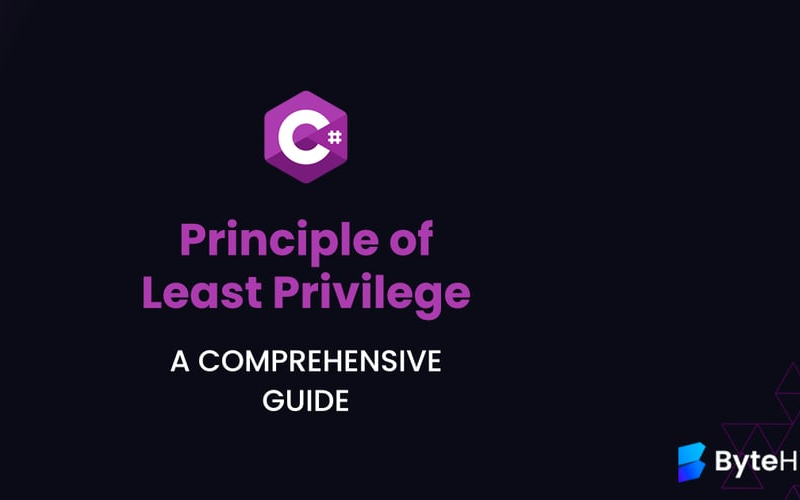Introduction to the Principle of Least Privilege
Welcome! Today, we’re diving into the Principle of Least Privilege (PoLP). Ever wondered what it is and why it matters? You’re about to find out. We will explore its history, importance in cybersecurity, and more.
What is the Principle of Least Privilege?
The Principle of Least Privilege (PoLP) is a security concept aimed at giving users, systems, and processes only the permissions they need to perform their tasks—nothing more, nothing less.
Why the Principle of Least Privilege is Important in Cybersecurity
Why care about PoLP? It minimizes risks, containing potential breaches before they become disasters. Think of it as having a safety net underneath a tightrope walker.
Implementing the Principle of Least Privilege
Now, let’s dive into the nitty-gritty: how to implement PoLP effectively. Buckle up because this is where theory meets practice. We’ll go through steps, best practices, and common pitfalls.
Steps to Implement the Principle of Least Privilege
Implementing PoLP involves several steps:
- Identify Roles and Responsibilities: Know who needs what access.
- Minimize Privileges: Assign only the necessary permissions.
- Regular Review: Continually audit and adjust permissions.
- Use Tools: Leverage technology to aid in enforcement.
Best Practices for Enforcing the Principle of Least Privilege
Here are some best practices to keep you on the right track:
- Segregate Duties: Separate tasks to reduce risk.
- Automation: Use automated tools for consistency.
- Training: Keep your team educated about PoLP.
- Logging and Monitoring: Keep an eye on activities.
Common Mistakes to Avoid When Implementing the Principle of Least Privilege
Avoid these pitfalls:
- Overcomplexity: Don’t complicate things unnecessarily.
- Lapsed Reviews: Regularly check and update privileges.
- Ignoring Temporary Access: Revoke once the task is done.
- One-Size-Fits-All: Custom-fit privileges instead.
Principle of Least Privilege in App Security
When it comes to application security, PoLP is indispensable. We’ll break down how to integrate PoLP into app security, especially for .NET apps, and tackle common challenges and solutions.
Application of the Principle of Least Privilege in App Security
In the realm of app security, PoLP ensures that application components have only the necessary permissions to function. If a vulnerability is exploited, PoLP can help limit the damage.
Ensuring .NET App Security with the Principle of Least Privilege
For .NET app security, applying PoLP means:
- Restricting API calls: Limit what each component can do.
- Minimizing Service Account Permissions: Only give services the permission they need.
- Mandatory Code Reviews: Ensure your code adheres to PoLP principles.
Challenges and Solutions in Applying the Principle of Least Privilege in App Security
Implementing PoLP in app security is not without its hurdles. Challenges can include:
- Complex Permissions: The more complex your app, the harder it is to manage permissions.
- Legacy Systems: Older systems might not support granular permissions.
Solutions? Embrace modern architectures and continuous integration practices.
Tools and Technologies
Having the right tools makes all the difference. We’ll look at some that can help you enforce PoLP.
Tools to Help Enforce the Principle of Least Privilege
Here are some invaluable tools:
- Access Management Systems: Like IAM (Identity Access Management) systems.
- Auditing Tools: For regular permission checks.
- Automation Tools: For automating all those repetitive tasks.
Leveraging Modern Technologies for Effective Implementation
Modern technologies can simplify PoLP:
- Containers and Microservices: These make it easier to apply granular permissions.
- AI and Machine Learning: Use these to predict and enforce optimal permissions.
Enhance Your App Security with ByteHide
ByteHide offers an all-in-one cybersecurity platform specifically designed to protect your .NET and C# applications with minimal effort and without the need for advanced cybersecurity knowledge.
Why Choose ByteHide?
- Comprehensive Protection: ByteHide provides robust security measures to protect your software and data from a wide range of cyber threats.
- Ease of Use: No advanced cybersecurity expertise required. Our platform is designed for seamless integration and user-friendly operation.
- Time-Saving: Implement top-tier security solutions quickly, so you can focus on what you do best—running your business.
Take the first step towards enhancing your App Security. Discover how ByteHide can help you protect your applications and ensure the resilience of your IT infrastructure.
Conclusion
Recap of Key Points
- PoLP minimizes risks by only giving the necessary permissions.
- Effective implementation involves role identification, regular review, and using the right tools.
- Essential in both general app security and specific .NET contexts.
Final Thoughts on the Principle of Least Privilege
In a world overflowing with cyber threats, PoLP is your best friend. Use it wisely, and you’ll sleep better at night—knowing your systems are a bit safer.
Hey, did you enjoy that deep dive? Implement PoLP now and thank yourself later! Your digital assets will be more secure, and you’ll have fewer headaches down the road. Ignoring PoLP? Well, let’s just say that’s a breach waiting to happen. Take action now! ⏳
Source link
lol

